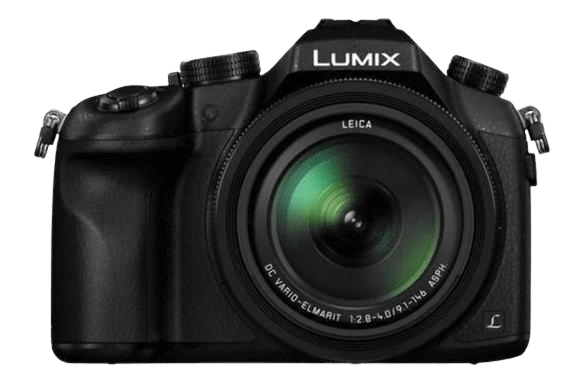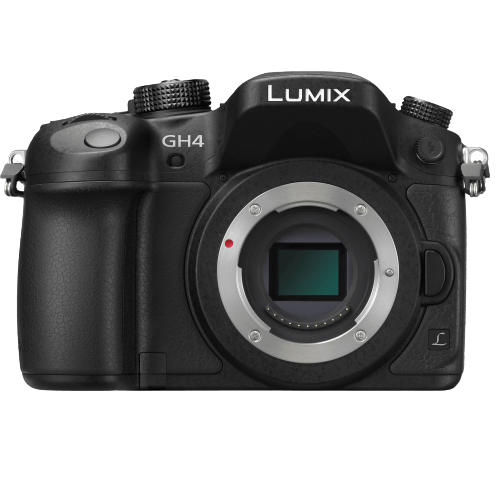Panasonic Lumix DMC-FZ1000 vs Lumix DMC-GH4 Comparison
Panasonic Lumix DMC-FZ1000

Panasonic Lumix DMC-GH4

The Panasonic Lumix DMC-GH4 outperforms the Panasonic Lumix DMC-FZ1000 with a score of 58/100 compared to 57/100. Both cameras were released in 2014 and have similar dimensions, with the GH4 being slightly smaller and lighter at 133 x 93 x 84mm and 560g, while the FZ1000 measures 137 x 99 x 131mm and weighs 831g.
The GH4 is a better camera due to its mirrorless design and higher score, but it comes with a higher launch price of $1700 compared to the FZ1000’s $899. The FZ1000 has its advantages as a bridge camera, offering a more affordable option for those who are on a budget.
Taking all factors into consideration, the GH4 stands out as the more advanced and versatile camera, while the FZ1000 is an excellent budget-friendly alternative for casual photographers.
Panasonic Lumix DMC-FZ1000 vs Lumix DMC-GH4 Overview and Optics
The Panasonic Lumix DMC-FZ1000 emerges as the winner in optics with a score of 61/100, 9 points ahead of the Panasonic Lumix DMC-GH4, which scored 52/100. Both cameras share certain specifications, such as a 12fps shooting speed, CMOS sensor type, and Venus Engine processor. However, there are differences that set them apart and contribute to the FZ1000’s higher score.
The FZ1000 has a larger sensor size of 1″ compared to the GH4’s Micro Four Thirds sensor, resulting in better image quality. Additionally, the FZ1000 has 20 megapixels, while the GH4 only has 16 megapixels, providing the FZ1000 with higher resolution images. Moreover, the FZ1000 has image stabilization, which the GH4 lacks, making it better for capturing steady shots.
On the other hand, the GH4 has a higher DXOMARK score for its sensor at 74, compared to the FZ1000’s score of 64. This indicates that the GH4’s sensor performs better in certain aspects, such as dynamic range and low light performance. Furthermore, the GH4 has a Micro 4/3 lens mount, allowing users to change lenses, unlike the FZ1000, which has a fixed lens mount. This gives the GH4 more versatility in terms of lens options.
Despite the GH4’s advantages in sensor performance and lens versatility, the FZ1000’s larger sensor size, higher megapixel count, and image stabilization make it the superior camera in terms of optics. The FZ1000’s higher score reflects its overall better performance in this category, making it the better choice for those prioritizing optical quality.
Panasonic Lumix DMC-FZ1000 vs Lumix DMC-GH4 Video Performance
The Panasonic Lumix DMC-FZ1000 outperforms the Panasonic Lumix DMC-GH4 in video capabilities, scoring 83/100 compared to the GH4’s 70/100. Both cameras share some common specifications, such as 4K video resolution and built-in time-lapse functionality. However, there are key differences that give the FZ1000 an advantage over the GH4 in this aspect.
The FZ1000 boasts a higher maximum video frame rate of 60fps, compared to the GH4’s 24fps. This allows the FZ1000 to capture smoother and more detailed footage, particularly in action-packed scenes or fast-moving subjects. Additionally, the FZ1000 has a max video dimension of 3840 x 2160, ensuring high-quality video output.
On the other hand, the GH4 does have a slightly larger max video dimension of 4096 x 2160. This may provide a marginal increase in video quality compared to the FZ1000. However, it is important to consider that the lower frame rate of the GH4 may compromise the overall video performance, despite its larger dimensions.
Taking into account the differences in video capabilities, the Panasonic Lumix DMC-FZ1000 emerges as the superior choice for videographers seeking smooth, high-quality footage. The higher frame rate and comparable video dimensions make it a more versatile option for various filming scenarios. While the GH4 does offer a slightly larger video dimension, its lower frame rate ultimately renders it less effective in capturing smooth and detailed videos.
Panasonic Lumix DMC-FZ1000 vs Lumix DMC-GH4 Features and Benefits
The Panasonic Lumix DMC-GH4 emerges as the winner with a feature score of 70/100, while the Panasonic Lumix DMC-FZ1000 scores 58/100. Both cameras have several features in common, such as a 3-inch screen size, flip screen, absence of GPS, and the presence of WIFI.
The GH4 surpasses the FZ1000 in certain aspects. It has a touchscreen, which the FZ1000 lacks, making it easier and more intuitive for users to navigate through menus and settings. However, the screen resolution of the GH4 is lower at 1,036,000 dots compared to the FZ1000’s 2,359,000 dots. Despite this, the touchscreen capability of the GH4 outweighs the resolution difference.
On the other hand, the FZ1000 has its advantages as well. It is equipped with Bluetooth, a feature absent in the GH4. This allows for easy and seamless sharing of photos and videos with compatible devices. While both cameras have WIFI, the added Bluetooth functionality of the FZ1000 provides an extra connectivity option.
Considering all the points mentioned, the Panasonic Lumix DMC-GH4 is the better camera due to its higher feature score and the presence of a touchscreen, which enhances usability. The FZ1000, although falling short in comparison, still offers a higher screen resolution and Bluetooth connectivity, making it a viable choice for users who prioritize those features. Ultimately, the decision between these cameras depends on the individual preferences and requirements of the user.
Panasonic Lumix DMC-FZ1000 vs Lumix DMC-GH4 Storage and Battery
The Panasonic Lumix DMC-GH4 outperforms the Panasonic Lumix DMC-FZ1000 in storage and battery with a score of 60/100, a difference of 39 points compared to the FZ1000’s 21/100. Both cameras accept SD, SDHC, and SDXC memory cards. However, the GH4 offers two memory card slots, providing more storage options than the FZ1000’s single slot.
Regarding battery life, the GH4 has a clear advantage with 500 shots per charge, compared to the FZ1000’s 360 shots. The GH4 uses a DMW-BLF19 battery, while the FZ1000 uses a DMW-BLC12PP battery. Neither camera supports USB charging.
Although the FZ1000 falls behind in storage and battery, it may still meet the needs of casual users who prioritize other features. However, the GH4 is a better choice for those requiring extended battery life and additional storage capacity. Both cameras have their merits, but the GH4 clearly excels in storage and battery performance.
Panasonic Lumix DMC-FZ1000 vs Lumix DMC-GH4 – Our Verdict
Are you still undecided about which camera is right for you? Have a look at these popular comparisons that feature the Panasonic Lumix DMC-FZ1000 or the Panasonic Lumix DMC-GH4:

